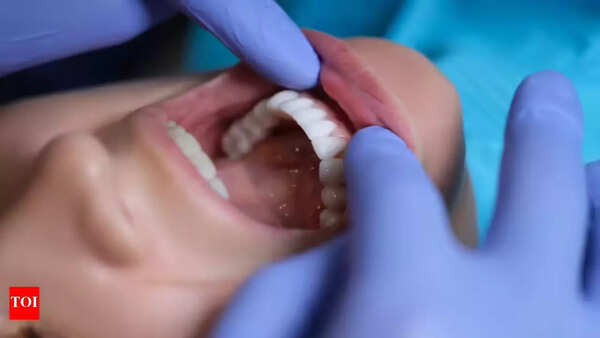Oral cancer, a potentially life-threatening condition, develops in the tissues of the mouth. This includes the lips, tongue, gums, inner cheeks, and the roof or floor of the mouth. Often referred to as mouth cancer, it can sometimes affect the oropharynx, the area at the back of the throat.
Early stages often manifest as a painless sore or patch, which can easily be overlooked. Regular dental checkups and self-examinations are crucial for early diagnosis. While anyone can be affected, certain lifestyle choices, particularly tobacco and alcohol consumption, significantly elevate the risk. Early detection and timely treatment are vital for improving outcomes and survival rates.
Oral cancer is a type of head and neck cancer that originates in the oral cavity. This encompasses the lips, tongue, cheeks, gums, the floor and roof of the mouth, and sometimes the oropharynx. It typically presents as a persistent sore, patch, or lump that does not heal, easily mistaken for a minor issue in its initial phases.
If left unaddressed, oral cancer can spread to adjacent structures like lymph nodes, other parts of the head and neck, and, in advanced cases, distant organs. Despite its potential severity, oral cancer is highly treatable when detected early.
While oral cancer predominantly affects individuals aged 60 and older, it can also occur in younger people. Men are statistically twice as likely to develop it compared to women. Incidence rates also vary among racial groups, with white men showing a higher prevalence than Black men. Approximately 11 out of 100,000 people will be diagnosed with oral cancer during their lifetime.
The insidious nature of this cancer lies in its early symptoms, which are often painless and subtle, leading to delays in diagnosis and treatment.
Oral cancer often manifests as persistent changes in the mouth. Key indicators include:
Visible Signs:
Sensory and Functional Symptoms:
These symptoms can resemble other conditions, such as infections or ulcers, but their persistence should prompt further investigation.

Regular self-exams can play a crucial role in identifying unusual changes early on:
If you notice anything unusual, consult a healthcare professional immediately.

Oral cancer can significantly impair essential functions such as speaking, chewing, swallowing, and even breathing, depending on the tumor's location and size. When it affects the oropharynx, it can lead to oropharyngeal cancer, impacting the base of the tongue, soft palate, tonsils, and the back of the throat.
The oral cavity, where oral cancer typically originates, includes:

Oral cancer begins in squamous cells, the thin, flat cells lining the inside of the mouth. When these cells undergo mutations, often due to prolonged exposure to carcinogens, they multiply uncontrollably, forming tumors.
Major Risk Factors:
According to reports, approximately 25% of oral cancer cases occur in individuals without any of these risk factors, highlighting the importance of regular oral screenings.
Diagnosis typically begins during routine dental or medical exams, with dentists often playing a key role in early detection.
Diagnostic methods include:
Once a lesion is confirmed as cancerous, additional tests are performed to determine the stage, which guides treatment options.
Stages of Oral Cancer
Oral cancer is staged using the TNM system:
Staging helps doctors determine the most effective treatment and estimate the patient’s prognosis.
While not all cases are preventable, the risk can be significantly reduced by:
Life after oral cancer treatment varies. Some patients experience minor changes, while others face long-term impacts on speaking, chewing, and appearance. Support from reconstructive surgery, physical therapy, speech therapy, and mental health counseling may be needed. Ongoing check-ups are essential, as recurrence or secondary cancers are possible.
Newer articles
Older articles
 Black Caps Set for Blockbuster Home Summer Against Cricket Giants
Black Caps Set for Blockbuster Home Summer Against Cricket Giants
 Elon Musk Calls for ISS Retirement, Citing Mars Focus After $1.25B Allocation
Elon Musk Calls for ISS Retirement, Citing Mars Focus After $1.25B Allocation
 Sharma Reveals Heart-Stopping Moment of Yadav's Game-Changing Catch in T20 World Cup
Sharma Reveals Heart-Stopping Moment of Yadav's Game-Changing Catch in T20 World Cup
 Daren Sammy Fined, Receives Demerit Point for Umpire Criticism After Test Match Controversy
Daren Sammy Fined, Receives Demerit Point for Umpire Criticism After Test Match Controversy
 Smith Aims for Second Test Return After Unique Baseball Cage Recovery
Smith Aims for Second Test Return After Unique Baseball Cage Recovery
 Gujarat Cricket Association Gears Up to Launch T20 League in 2025-26 Season
Gujarat Cricket Association Gears Up to Launch T20 League in 2025-26 Season
 Najmul Hossain Shanto Resigns as Bangladesh Test Captain After Sri Lanka Defeat
Najmul Hossain Shanto Resigns as Bangladesh Test Captain After Sri Lanka Defeat
 Man City Title Stripping: Unprecedented Chaos Looms for Premier League Amid Financial Allegations
Man City Title Stripping: Unprecedented Chaos Looms for Premier League Amid Financial Allegations
 Ex-India Star Engineer Slams ECB's Pataudi Trophy Renaming, Questions Anderson-Tendulkar Choice
Ex-India Star Engineer Slams ECB's Pataudi Trophy Renaming, Questions Anderson-Tendulkar Choice
 Jin's Solo Concert in Korea: A Reunion with ARMY, Surprise Guests, and Electrifying Performances
Jin's Solo Concert in Korea: A Reunion with ARMY, Surprise Guests, and Electrifying Performances